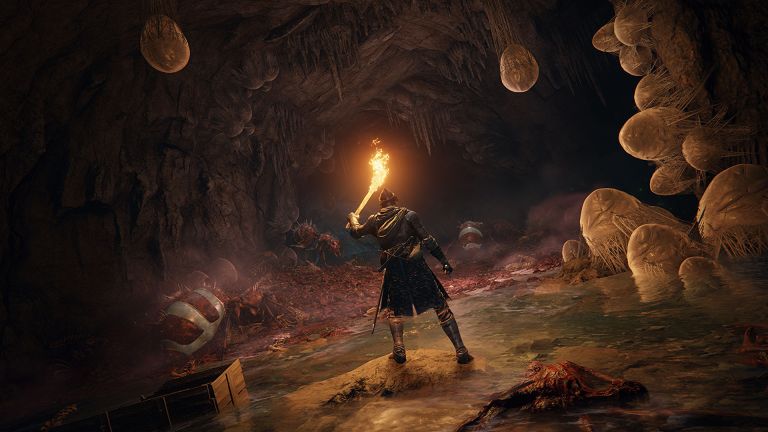Elden Ring Brings Back Dark Souls 2’s Best Feature
Elden Ring pays tribute to the controversial Dark Souls 2 by resurrecting one of that game's best ideas.

We’ve spoken before about how Elden Ring will obviously borrow ideas from Dark Souls and Dark Souls 3 (as well as change a few things), but the latest round of Elden Ring previews seemingly reveal that the game is bringing back one of the few nearly universally beloved features from Dark Souls 2: Powerstancing.
What is Powerstancing? Well, brace yourself, because we’re about to get real nerdy for a second.
Powerstancing is basically the ability to dual-wield a variety of weapons (or just two of the same weapon) and use them in conjunction with each other in order to enable a unique set of moves. When you enable Powerstancing, you’re essentially making it so that attacks with your left-handed weapon will cause you to perform attacks with both weapons instead. I apologize to Dark Souls 2 fans who are ready to jump in and share all the details about how Powerstancing actually works (and there are quite a few of them), but what anyone who is unfamiliar with this system really needs to know is that Powerstancing enabled players to focus on more “true” dual-wield builds that accommodated a greater variety of weapons and moves.
For a little better idea of what we’re talking about, check out this video that breaks down the basics of Powerstancing in Dark Souls 2…
…and then check out the beginning of this video that shows how a similar version of this system will work in Elden Ring (as seen near the beginning of the video).
To really appreciate this system, though, you kind of have to look at the alternatives. There was dual-weilding in Dark Souls, but it was, to be very blunt, an incredibly bad way to play the game. Dark Souls relied so much on “shield and parry” gameplay that only those looking for unique challenges or just a completely different way to play the game attempted to use what was basically a very limited version of a seemingly simple concept.
Dual-weilding weapons was also technically possible in Dark Souls 3, but that game utilized a very odd approach to the entire concept that basically encouraged you to use specific sets of “paired weapons” designed for dual-weilding. If you weren’t using those weapons, you were pretty much back to the Dark Souls-style of dual-weilding (with a few notable differences) where the whole system was technically available but weirdly underdeveloped.
Powerstancing, as it existed in Dark Souls 2, was not a perfect solution to the dual-weilding problems in the Dark Souls series, but it was FromSoftware’s best attempt yet at offering a solution to that problem. Dark Souls 2 rightfully attracts quite a bit of criticism for the ways it played with the Dark Souls formula by trying to make some fundamentally bad ideas work, but it also deserves some credit for exploring the boundaries of that formula and seeing what did and didn’t work.
While I understand that FromSoftware likely felt that Powerstancing didn’t entirely work as it was presented in Dark Souls 2, the fact that they really didn’t try to improve that system in Dark Souls 3 and just kind of moved away from it always felt like a strange admission of defeat. For a studio that loves to refine and perfect its mechanics, it’s never really made sense that they pivoted so quickly from this idea that was generally well-received and certainly interesting (if not yet refined).
The return of this concept in Elden Ring (or at least a version of it), is just one of those ways that suggest Elden Ring is not only going to encourage a far greater variety of builds and play options that allow different players to experience the game and overcome its challenges in their own way but that it will also see FromSoftware take another look at some of their previous ideas and reexamine Dark Souls 2‘s spirit of questioning everything that came before.
